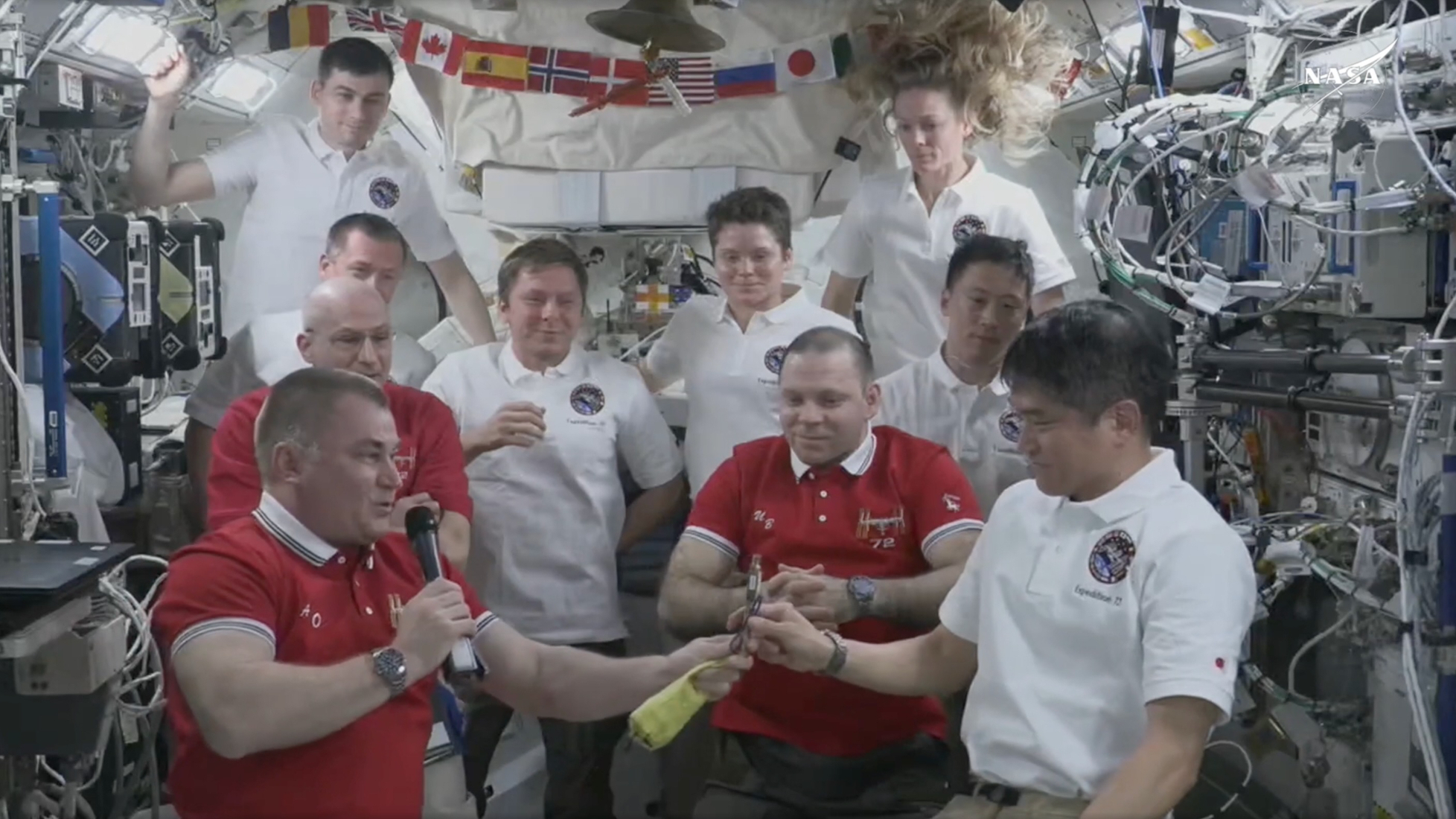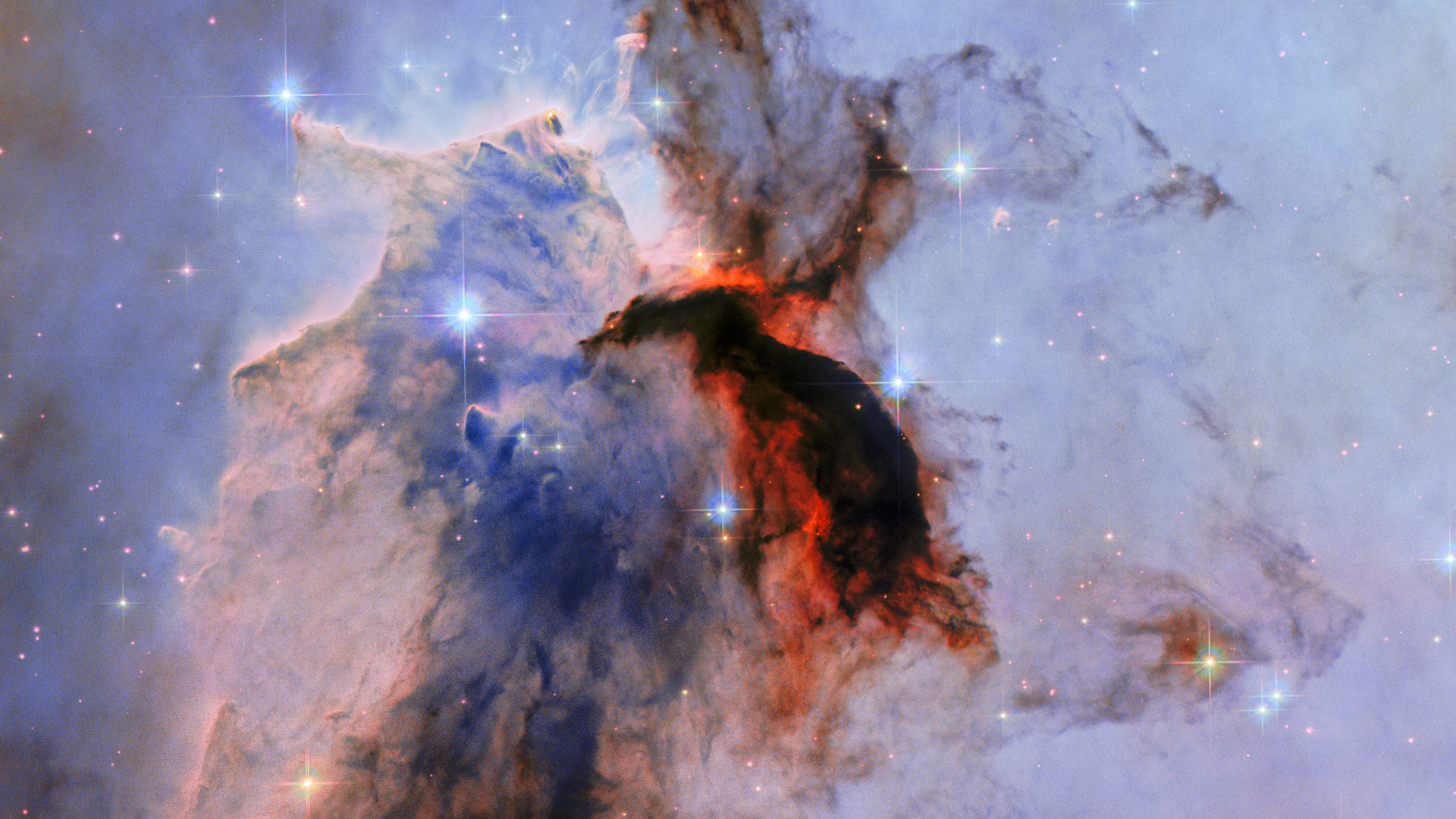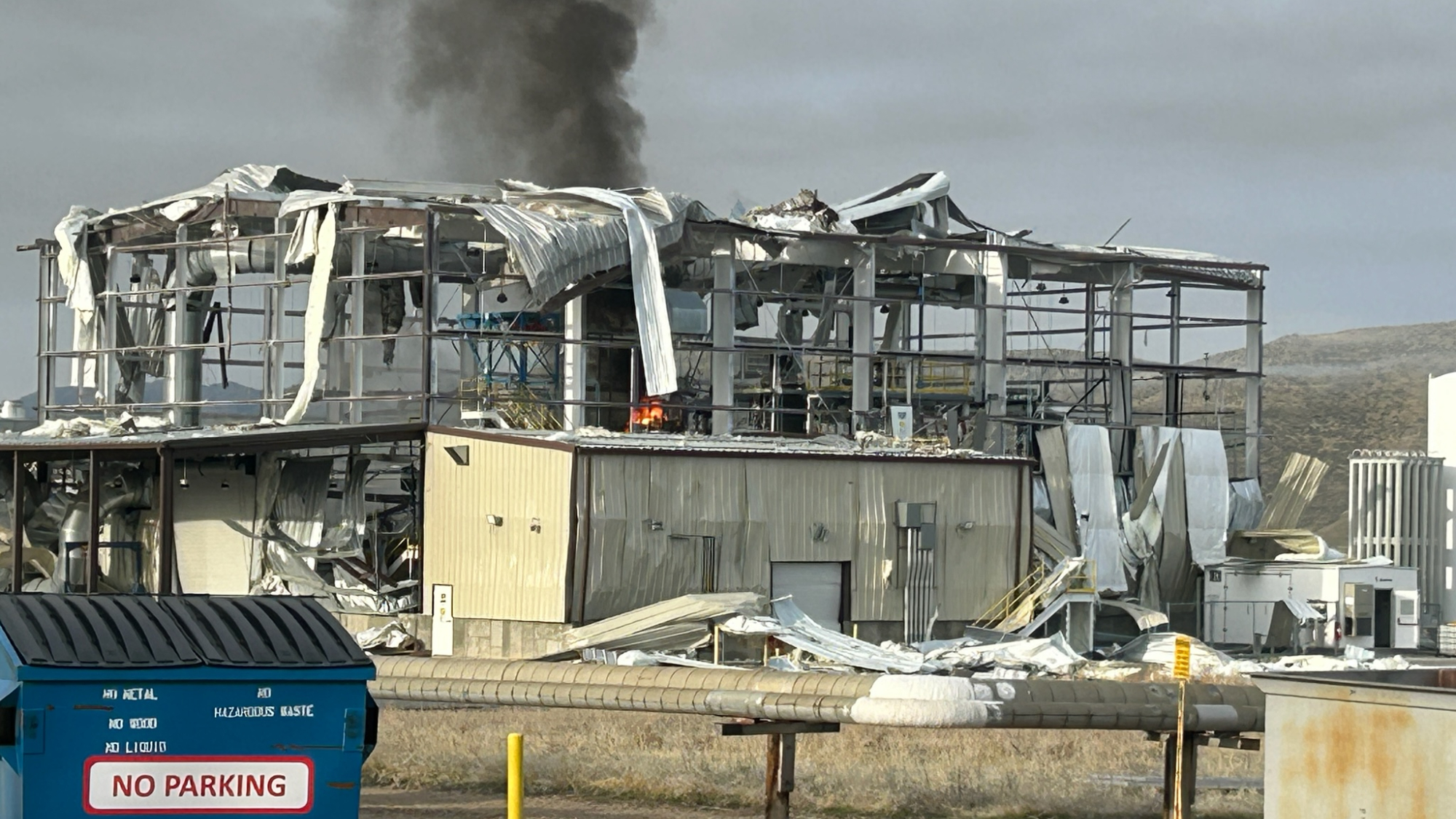Gateway gift: Northrop Grumman delivers lunar-orbit hab for Space Center Houston display
'It is a great way to tell the story of the Gateway to the public.'
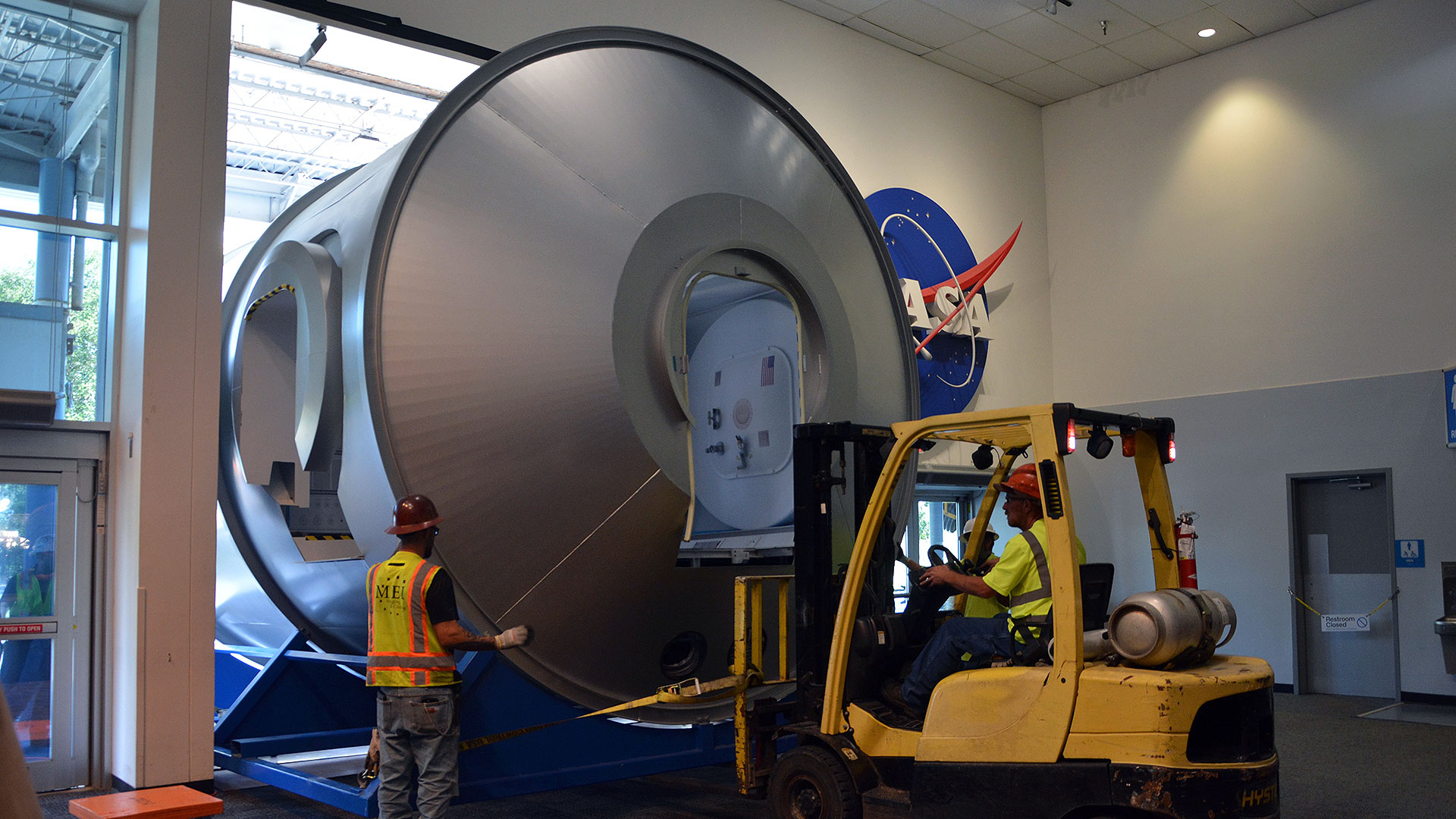
An early, full-scale mockup of the astronaut accommodations developed for a small space station orbiting the moon has arrived at Space Center Houston to go on public display.
Delivered by flatbed truck and carefully moved inside by forklifts and trolleys on Tuesday (Oct. 6), the two-piece module sometimes only had mere inches of clearance, and that was after Space Center Houston trimmed back tree limbs and tore out a window-lined wall to create a path.
Northrop Grumman donated the "ground prototype" of the cislunar habitat that it built in 2019. The 14.5-foot-wide by 21-foot-long (4.4 by 6.4 meters) module was used by NASA to evaluate the its configuration as compared to other companies' concepts under the second Next Space Technologies for Exploration Partnerships, or NextSTEP-2, solicitation.
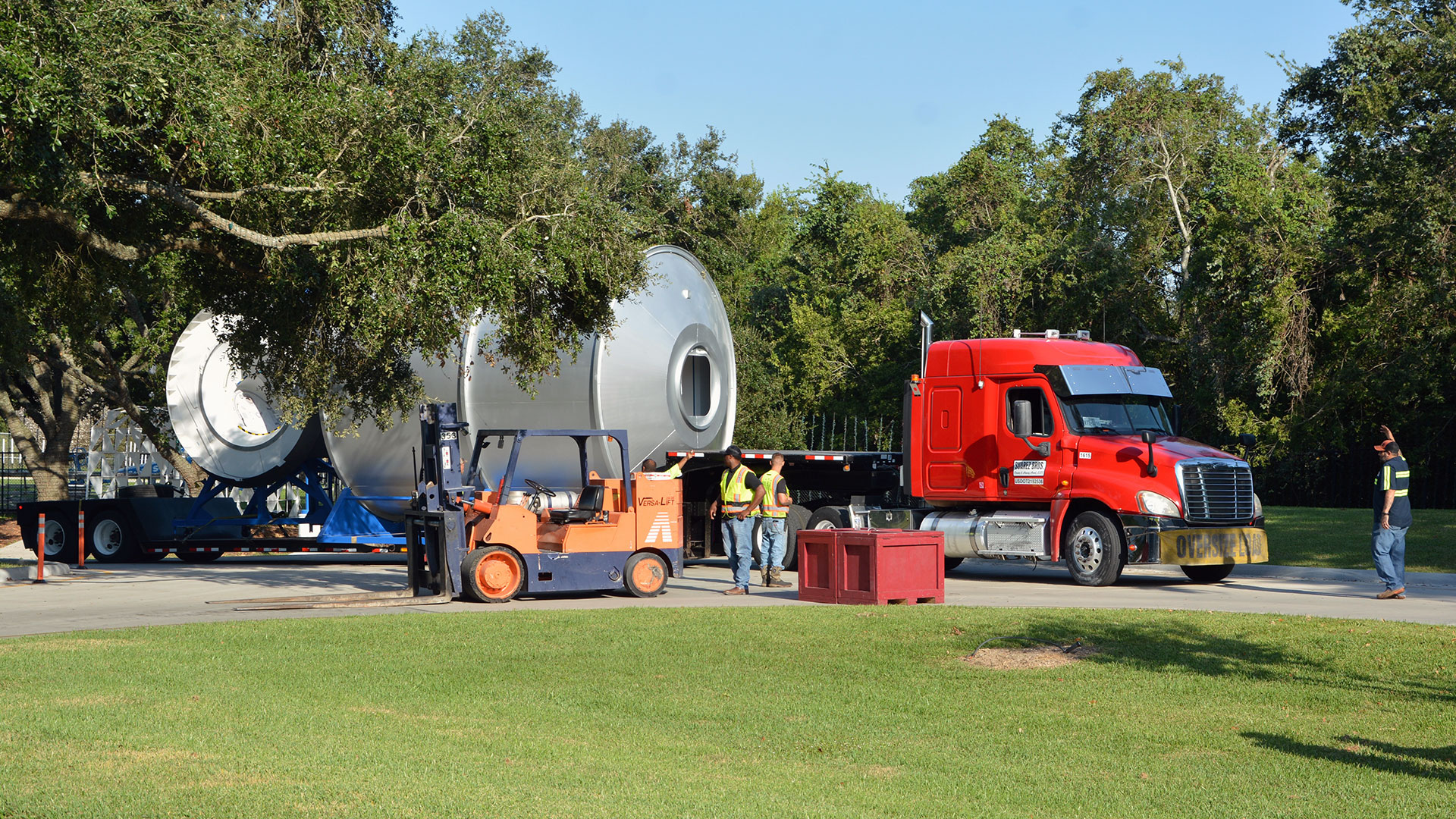
The mockup led, in part, to NASA selecting Northrop Grumman to provide the HALO, or Habitation and Logistics Outpost, for the Artemis Gateway, a human-tended lunar-orbit platform. NASA astronauts and their international counterparts may someday use the Gateway to conduct research during weeks-long stays in orbit around the moon or as a way station when transferring between Earth and the lunar surface.
Related: The Gateway: NASA's proposed lunar space station
"It's already done its job; it's now surplus, and Northrop Grumman reached out to us and asked us if we wanted it," said Paul Spana, exhibits director at Space Center Houston, in an interview with collectSPACE. "It is a great way to tell the story of the Gateway to the public."
Northrop Grumman based its HALO design on Cygnus, its uncrewed spacecraft used to resupply the International Space Station (ISS).
"Our team looks forward to continuing our collaboration with NASA in order to overcome the technical challenges associated with the harsh radiation and thermal environment of lunar space, as well as the unique challenge of hosting visiting crews for extended durations in this environment," a Northrop Grumman executive said when the contract for HALO was finalized in 2021.
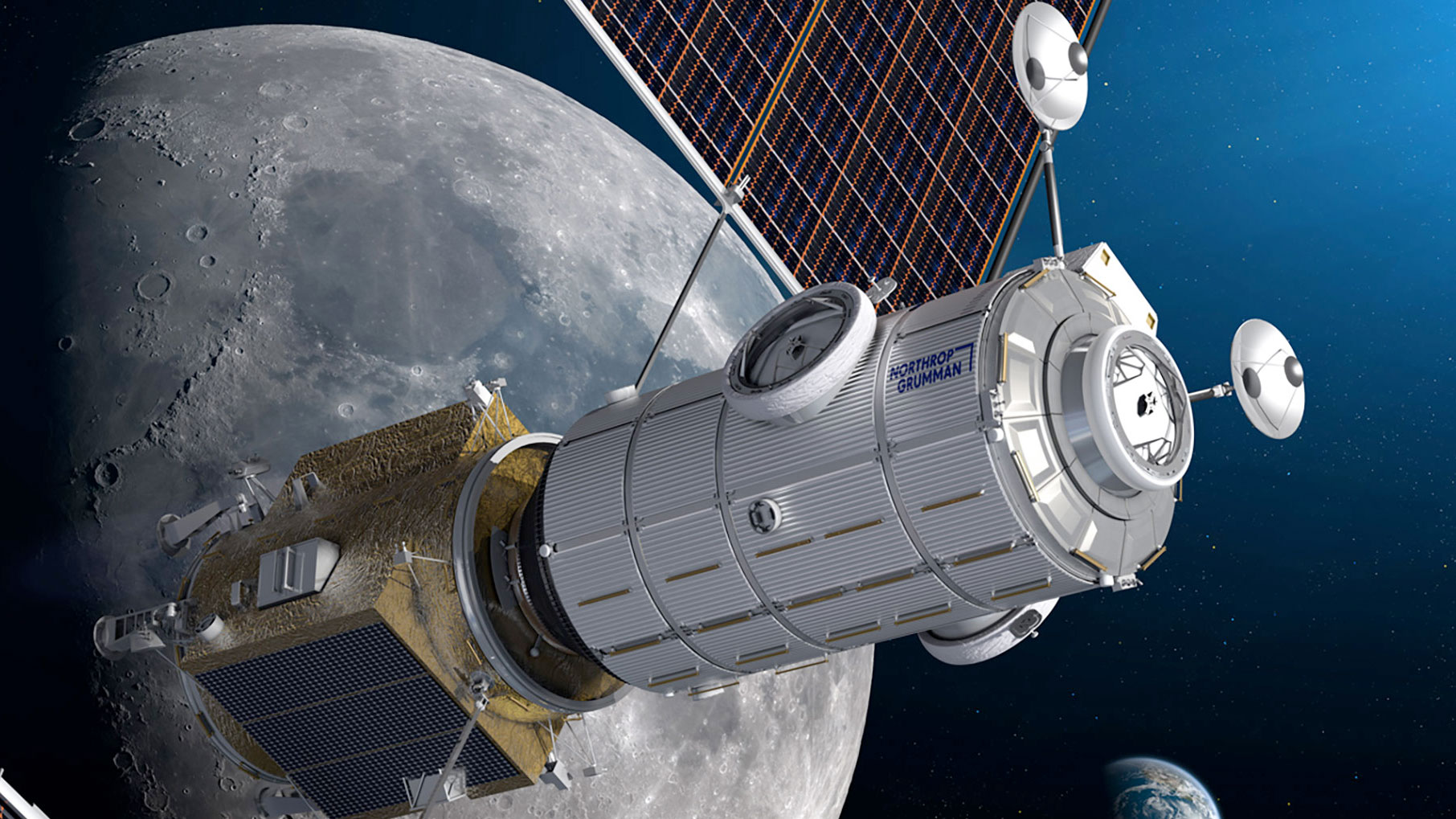
Targeted for launch in the next few years, Northrop Grumman's HALO, along with a power and propulsion element being built by Maxar Space Systems, will be placed into lunar orbit by a SpaceX Falcon Heavy rocket. The HALO will provide the docking ports for Orion spacecraft and moon landers, as well as the first living quarters for visiting crews.
"I think that the biggest difference between this early prototype mockup and then what the final plan is, is the flight version is smaller in diameter," said Spana. "Also, the final design doesn't have a window, like you'll see in this model."
The 7,500-pound (3,400 kilograms) NextSTEP-2 mockup was originally installed in the Space Vehicle Mockup Facility (Building 9) at Johnson Space Center, alongside other training versions of ISS modules, Orion capsules and commercial crew and cargo vehicles. Previously, the general public could only see the prototype from a glassed-in, overhead walkway overlooking the training floor.
Now, visitors to Space Center Houston will not only be able to walk around the exterior of the habitat module, but go inside. Guests will be able to experience "a day in the life" aboard the habitat, providing a glimpse of what orbiting around the moon could potentially entail.
"Inside you'll see sleep stations, work areas and lots of [science equipment] racks. It looks a lot like the interior of the International Space Station, but on a smaller scale," said Spana. "Guests always tell us that they want to go into a spacecraft. In this case, everybody will be able to go inside."
The exhibit is scheduled to open on Oct. 24.
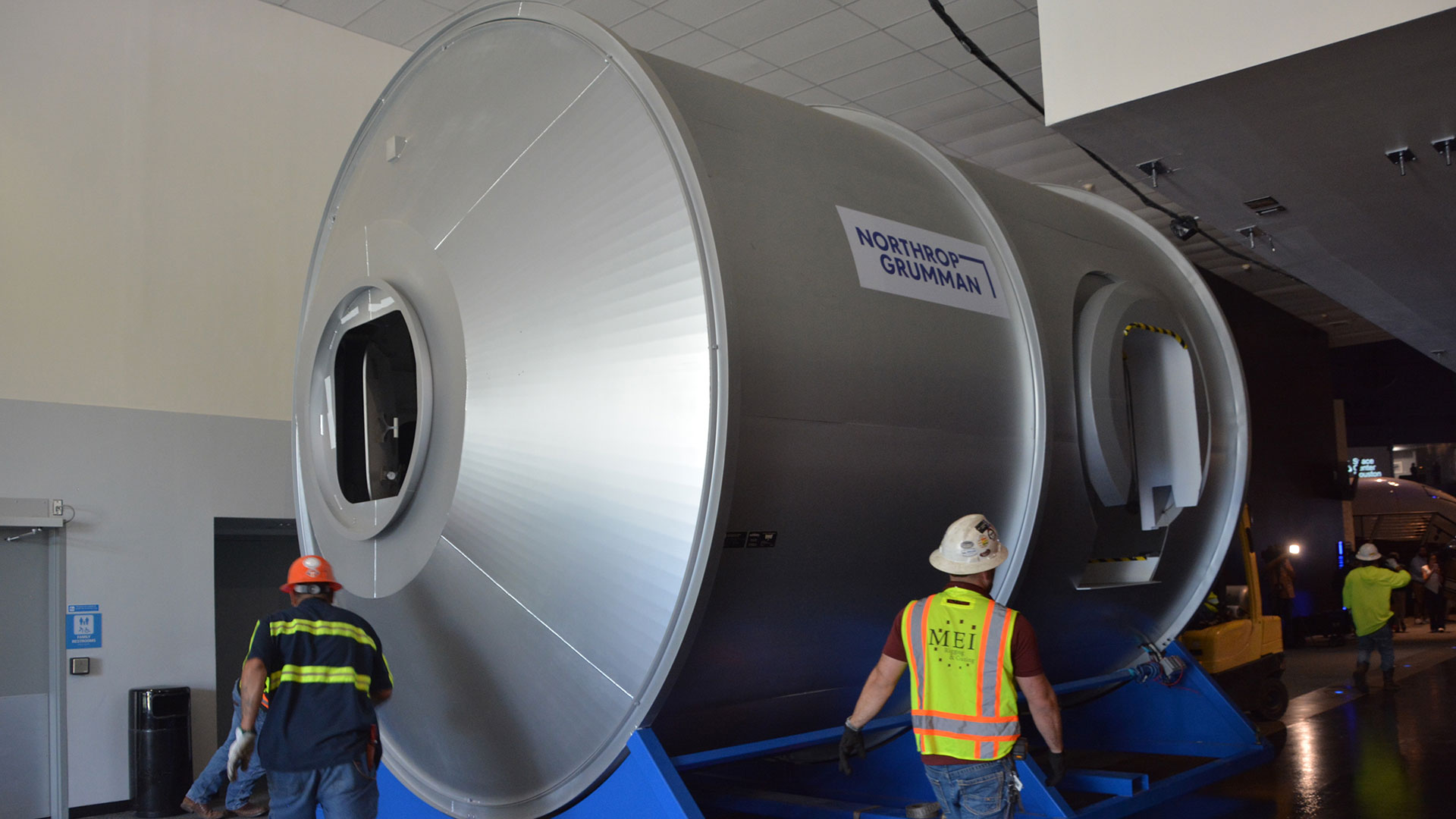
A more advanced mockup of the HALO, also built by Northrop Grumman, took the NextSTEP-2 structure's place at the Space Vehicle Mockup Facility in 2021, to begin familiarizing astronauts with the actual equipment and layout they may work with in lunar orbit.
The flight hardware for the HALO module was put through stress testing at Thales Alenia in Turin, Italy in July, bringing it a step closer to it being ready for launch.
Northrop Grumman's NextSTEP-2 cislunar habitat mockup is the latest addition to Space Center Houston's Artemis exhibit. As well as equipment and displays like the prototype HALO, the gallery features interactive, hands-on activities.designed to engage guests in NASA's efforts to return Americans to the moon, including the first woman, the first person of color and the first international astronauts.
Click through to collectSPACE to see more photos of Northrop Grumman's cis-lunar habitat mockup arriving at Space Center Houston.
Follow collectSPACE.com on Facebook and on X at @collectSPACE. Copyright 2024 collectSPACE.com. All rights reserved.
Get the Space.com Newsletter
Breaking space news, the latest updates on rocket launches, skywatching events and more!
Join our Space Forums to keep talking space on the latest missions, night sky and more! And if you have a news tip, correction or comment, let us know at: community@space.com.

Robert Pearlman is a space historian, journalist and the founder and editor of collectSPACE.com, a daily news publication and community devoted to space history with a particular focus on how and where space exploration intersects with pop culture. Pearlman is also a contributing writer for Space.com and co-author of "Space Stations: The Art, Science, and Reality of Working in Space” published by Smithsonian Books in 2018.In 2009, he was inducted into the U.S. Space Camp Hall of Fame in Huntsville, Alabama. In 2021, he was honored by the American Astronautical Society with the Ordway Award for Sustained Excellence in Spaceflight History. In 2023, the National Space Club Florida Committee recognized Pearlman with the Kolcum News and Communications Award for excellence in telling the space story along the Space Coast and throughout the world.




